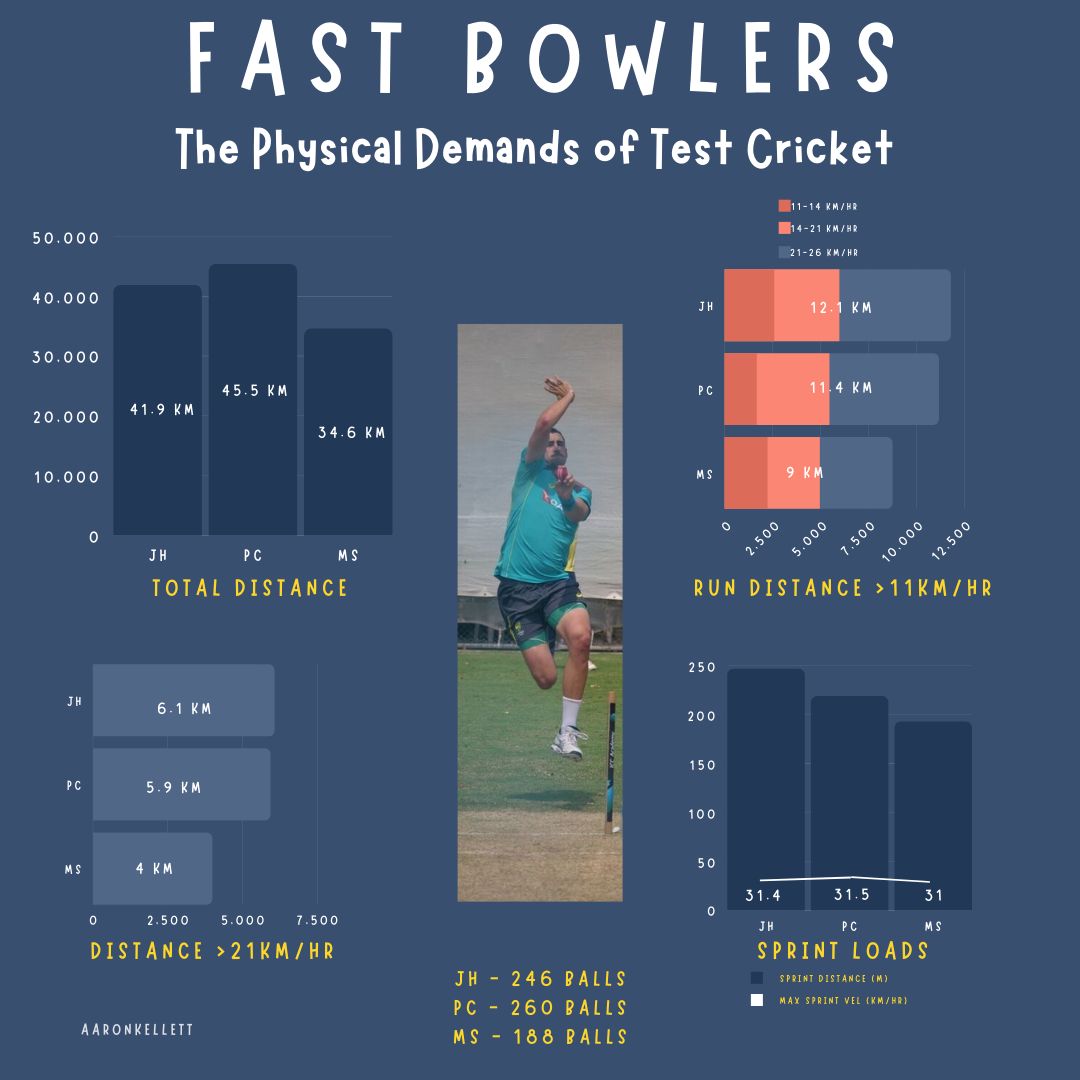
ක්රිකට් ඕස්ට්රේලියා කනිෂ්ඨ ක්රීඩක වේග පන්දු යැවීමේ මාර්ගෝපදේශය Cricket Australia Junior Player Bowling Guidelines
කනිෂ්ඨ ක්රීඩක වේග පන්දු යැවීමේ මාර්ගෝපදේශය පදනම් වී ඇත්තේ පවතින පර්යේෂණ මත වන අතර ක්රීඩකයන් ආබාධ වීමේ අවදානම අවම කිරීම අරමුණු කරයි. ඕස්ට්රේලියාවේ ක්රිකට් සහ අනෙකුත් පර්යේෂණ මගින් පෙන්නුම් කරන්නේ 20% - 33% අතර කනිෂ්ඨ (වයස 19 අඩු) වේග පන්දු යවන්නන් සෑම ක්රීඩා වාරයකදී ම පහළ කොන්දේ අස්ථි ආතති ආබාධ (සාමාන්යයෙන් ආතති අස්ථි බිඳීමක්) ඉහල යන බවයි. මෙම ආබාධ මුල් අවධියේදී හඳුනා ගැනීමට අපහසු වන අතර ආබාධ වුවහොත් සුවය ලබා නැවත ක්රීඩා කිරීමට මාස 4-12 අතර කාලයක් ගතවේ. එමනිසා මෙම ආබාධ වැළැක්වීම හොඳම ප්රවේශයයි.
කොන්දේ අස්ථි ආතති ආබාධ සඳහා වඩාත් අවදානමට ලක්විය හැකි කාල පරිච්ඡේදය වන්නේ ක්රීඩකයන් වැඩිවිය පැමිණීමෙන් පසුවය. ඔස්ට්රේලියානු ක්රිකට් පර්යේෂණය පෙන්වා දෙන්නේ ක්රීඩකයන් උපරිම උස පැමිණීමෙන් පසු මාස 18 යන තුරු කොන්දේ අස්ථි ආතති ආබාධ ඇතිවීමේ ඉහළම අවදානමක් පෙන්නුම් කරන බවයි. වැඩිවිය පැමිණීමෙන් පසු ශරීරයේ ශක්තියේ වෙනස්වීම්, ක්රීඩකයන් වැඩිහිටි ක්රීඩකයන් සමග තරඟ වලට මාරුවීමත් සමඟ ඔවුන්ගේ පන්දු යැවීමේ ප්රමාණය වැඩිවීම සහ අස්ථි ශක්තියේ සාපේක්ෂ දුර්වලතාවය මෙයට හේතුව විය හැකිය.
මෑත ක්රිකට් ඕස්ට්රේලියානු පර්යේෂණ* (2021 දී ප්රකාශයට පත් කරන ලද) අනුව කනිෂ්ඨ වේග පන්දු යවන්නන්ගේ කොන්දේ අස්ථි ආතති ආබාධ සඳහා ප්රධාන අවදානම් සාධක 3ක් ඇති බව අවධාරණය කරයි:
වයස - පන්දු යවන්නාගේ වයස බාල වන තරමට අවදානම වැඩි වේ
උස - පන්දු යවන්නා උස වන තරමට අවදානම වැඩි වේ
පන්දු යැවීමේ ප්රමාණ - ඔවුන් බොහෝ විට සතියකට පන්දු යවන ප්රමාණය වැඩි වන තරමට අවදානම වැඩි වේ
අපට ක්රීඩකයෙකුගේ වයස සහ උස වෙනස් කළ නොහැකි අතර, අපට ඔවුන්ගේ පන්දු යැවීමේ වාර ගණනට (සතියකට පන්දු යැවීමේ වාර ගණන) වෙනස්කම් සිදු කළ හැකි අතර, තරඟ වාරය අවසන් වන ආබාධයකට ගොදුරු වීමේ අවදානම අඩු කරයි.
සතියකට සිදු කලයුතු පන්දු යැවීමේ සැසි ගණන සකස් කිරීමෙන්, එය ඊළඟ පන්දු යැවීමේ සැසියට පෙර තෙහෙට්ටුව අඩු කිරීමට සහ අස්ථි (සහ අනෙකුත් පටක මාංශ පේශි ආදිය) යථා තත්ත්වයට පත් කිරීමට කාලය ලබා දෙයි.
වරින් වර - සෑම සති 6-12 කට වරක්, සම්පූර්ණ සුවය ලබා ගැනීමට සහ අස්ථි වලට අනුවර්තනය වීමට සහ ශක්තිමත් වීමට ඉඩ ලබා දීම සඳහා පන්දු යැවීමෙන් දින 5-10 ක දිගු විවේකයක් නිර්දේශ කෙරේ.
ක්රිකට් වාරය සඳහා සූදානම් වීම (පන්දු යැවීමේ වාර ගණන සහ තීව්රතාවය ක්රමයෙන් ගොඩ නැගීම) ඉදිරි ක්රීඩා සමය සඳහා තෙහෙට්ටුව සහ අස්ථි, මාංශ පේශී ආබාධ තත්ත්වය අඩු කර ගැනීමට ද වැදගත් වේ.
මෙම මාර්ගෝපදේශය කාන්තා සහ පිරිමි ක්රීඩකයින් යන දෙපාර්ශයම සඳහා අදාළ වේ.
The junior player pace bowling guidelines are based on available research and aim to reduce the risk of injury. Cricket Australia, and other research demonstrate that between 20%- 33% junior (<19 years of age) pace bowlers develop a lower back (lumbar) bone stress injury (typically a stress fracture) each season. These injuries are hard to detect in the early stages and take between 4-12 months to recover and return to play. Prevention is the best approach.
The most vulnerable periods for bone stress injury (not just in the lower back) are just after puberty. The Cricket Australia research shows the 18 months after peak height velocity (maximum growth spurt period around puberty) present the highest risk of bone stress injury. This is likely to be because of changes in strength (and forces generated) post-puberty, increase in bowling load with transition to older age competitions and a relative weakness in the bone strength (bones grow long before they grow strong).
Recent Cricket Australia research* (published in 2021) highlight that there are 3 keys risk factors for lumbar bone stress injury in junior pace bowlers:
- Age – the younger the bowler the greater the risk
- Height – the taller the bowler the greater the risk
- Bowling load – the more often they bowl in a week the greater the risk
Whilst we can not change a player’s age and height, we can make changes to their bowling frequency (number of bowling sessions per week) to reduce the risk of sustaining a season ending injury.
By adjusting the number of bowling sessions per week, it allows time to reduce fatigue before the next bowling session and for bone (and other tissues such muscles, tendons etc..) to recover.
From time to time – every 6-12 weeks, a longer 5-10 day break from bowling is recommended to allow for full recovery and for bone to adapt and become stronger.
Preparation (gradual build up of bowling frequency and intensity) for the cricket season is also important to reduce fatigue and condition bone, muscles and tendons for the season ahead.
These guidelines apply to female and male players.






